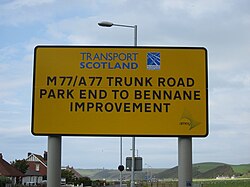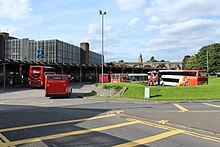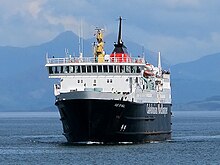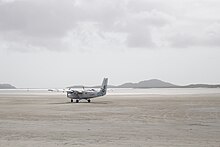
Transport in the United Kingdom is highly facilitated by road, rail, air and water networks. Transport is a devolved matter with each of the countries of the United Kingdom having separate systems under separate governments.

Argyll and Bute is one of 32 unitary council areas in Scotland and a lieutenancy area. The current lord-lieutenant for Argyll and Bute is Jane Margaret MacLeod. The administrative centre for the council area is in Lochgilphead at Kilmory Castle, a 19th-century Gothic Revival building and estate. The current council leader is Robin Currie, a councillor for Kintyre and the Islands.
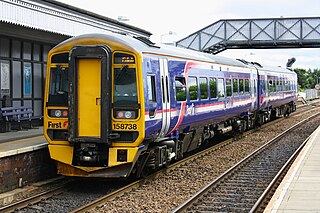
First ScotRail was a train operating company in Scotland owned by FirstGroup. It operated the ScotRail franchise between October 2004 and March 2015.
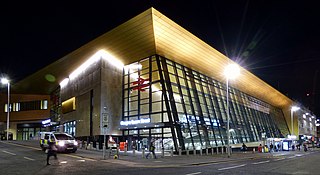
Glasgow Queen Street is a passenger railway terminus serving the city centre of Glasgow, Scotland. It is the smaller of the city's two mainline railway terminals and is the third busiest station in Scotland behind Central and Edinburgh Waverley.

The Highland Main Line is a railway line in Scotland. It is 118 mi (190 km) long and runs through the central Scottish Highlands, mainly following the route of the A9, and linking a series of small towns and villages with Perth at one end and Inverness at the other. Today, services between Inverness and Edinburgh, Glasgow and London use the line. At Inverness the line connects with the Far North Line, the Aberdeen-Inverness Line and the Kyle of Lochalsh Line. All trains are diesel-powered.
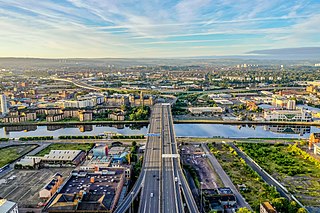
The city of Glasgow, Scotland, has a transport system encompassing air, rail, road and an underground light metro line. Prior to 1962, the city was also served by trams. Commuters travelling into Glasgow from the neighbouring local authorities of North and South Lanarkshire, Renfrewshire, East Renfrewshire, and East and West Dunbartonshire have a major influence on travel patterns, with tens of thousands of residents commuting into the city each day. The most popular mode of transport in the city is the car, used by two-thirds of people for journeys around the city.
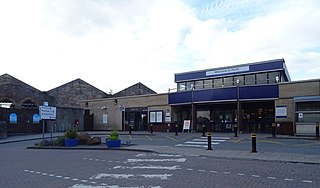
Perth railway station is a railway station located in the city of Perth, Scotland, on both the Glasgow to Dundee line and the Highland Main Line. It is managed by ScotRail, who provide almost all of the services.

Inverness railway station is the railway station serving the Scottish city of Inverness. It is the terminus of the Highland Main Line, the Aberdeen–Inverness line, the Kyle of Lochalsh line and the Far North Line.

Paisley Gilmour Street railway station is the largest of the four stations serving the town of Paisley, Renfrewshire, Scotland, and acts as the town's principal railway station. The station is managed by ScotRail and serves the Ayrshire Coast Line and Inverclyde Line, 7+1⁄4 miles (11.7 km) west of Glasgow Central. The station is protected as a category B listed building.

Edinburgh is a major transport hub in east central Scotland and is at the centre of a multi-modal transport network with road, rail and air communications connecting the city with the rest of Scotland and internationally.

Aberdeen railway station is the main railway station in Aberdeen, Scotland. It is the busiest railway station in Scotland north of the major cities of Glasgow and Edinburgh. It is located on Guild Street in the city centre, next to Union Square.

Caledonian Sleeper is the collective name for overnight sleeper train services between London and Scotland, in the United Kingdom. It is one of only two currently operating sleeper services on the railway in the United Kingdom, the other being the Night Riviera which runs between London and Penzance.

Gleneagles railway station serves the town of Auchterarder in Perth and Kinross, Scotland.
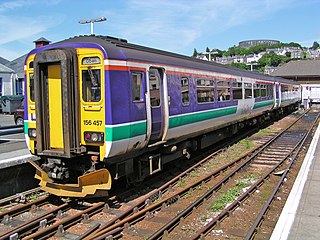
ScotRail was a train operating company in Scotland owned by National Express that operated the ScotRail franchise from March 1997 until October 2004. Prior to March 1997 ScotRail ran the trains and after October 2004 First ScotRail ran them.

The network of transportation in Aberdeen is extensive and diversified, like that of many comparably sized cities.

Tyne and Wear is a metropolitan area covering the cities of Newcastle upon Tyne and Sunderland, as well as North and South Tyneside, Gateshead and Washington.

David MacBrayne is a limited company owned by the Scottish Government. Formed in 1851 as the private shipping company David Hutcheson & Co. with three partners, David Hutcheson, Alexander Hutcheson and David MacBrayne, it passed in 1878 to David MacBrayne.

Abellio ScotRail, operating services under the name ScotRail, was the national train operating company of Scotland. A subsidiary of the Netherlands-based transport conglomerate Abellio, it operated the ScotRail franchise between 1 April 2015 and 31 March 2022.

The British Rail Mark 5 is the designation given to locomotive-hauled rail carriages built by Spanish manufacturer CAF for operation with Caledonian Sleeper.
After extensive privatisation of the public sector during the Margaret Thatcher administration, there remain few statutory corporations in the UK. Privatisation began in the late 1970s, and notable privatisations include the Central Electricity Generating Board, British Rail, and more recently Royal Mail. After the Hatfield rail crash accident, the British government decided to intervene and in 2002 renationalised Railtrack into Network Rail.
